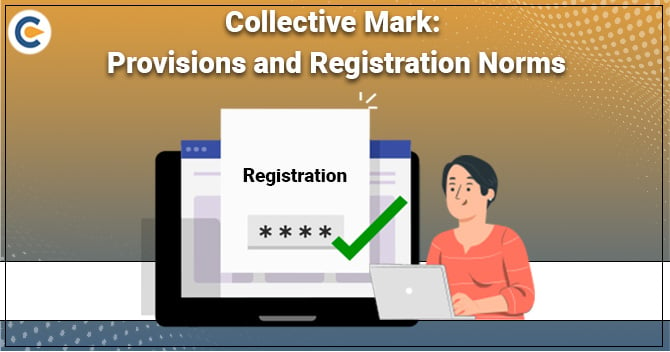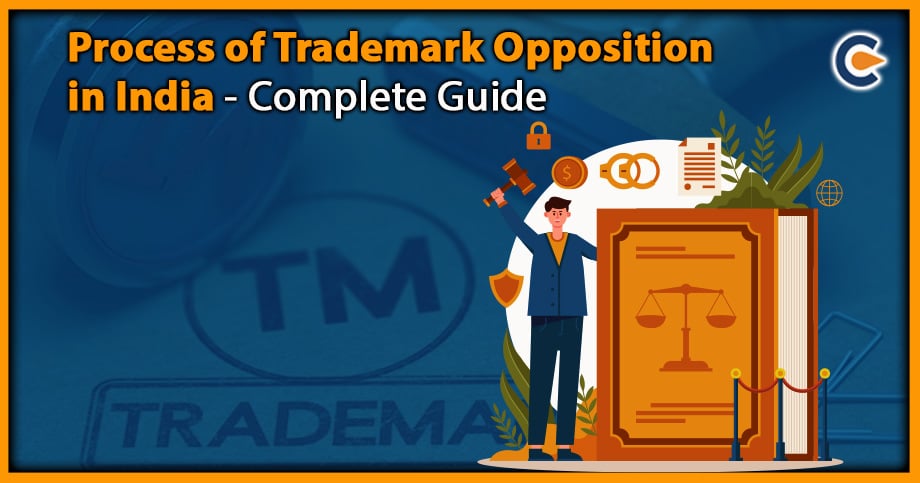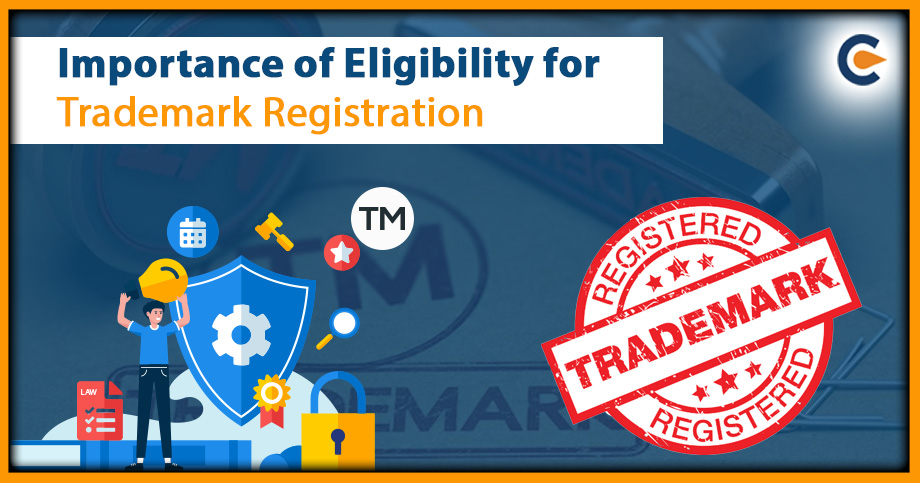As per Trademark Act, 1999, collective mark refers to a trademark differentiating the goods or services of a member of a group of individuals (not being a partnership within the scope of the Indian Partnership Act, 1932) (9 of 1932) which is the owner of the mark from those of others;
Special Provisions under Trademark Act, 1999 for Collective marks
The provisions of the said Act shall apply to collective marks exposed to the provisions cited in Chapter 8. Concerning such a mark, the reference cited in clause (zb) of sub-section (1) of section 2 to distinguishing the offerings, i.e., goods and services of one individual from others shall be interpreted as a reference to distinguishing the products or services of members of a group of the individual which is the owner of the mark from those of others.
Sections relating to Collective Marks under Trademark Act, 1999
The legal provisions regarding the collective mark are cited under Chapter 8 of Trademark Act, 1999[1]. The said chapter entails the following sections that govern every aspect of such marks.
Section 62
It seeks to oppose the misleading nature of marks. According to this section, the collective mark should not be misleading as to significance or character. Further, it states that the collective mark would stand unfit for registration;
- If it is likely to create confusion within the public domain or; If it projects itself other than a collective mark
Applicants seeking trademark protection are liable to authenticate their proposed mark through material evidence. The non-fulfillment of the above conditions shall lead to the cancellation of trademark registration.
Section 63
Section 63 provides the applicant with a requirement of submitting regulations administering the use of collective marks along with the application.
The said regulations must specify the following;
- A person is authorized to use the mark
- Conditions about association’s membership
- Conditions about use of the mark, including any sanctions for misusing the same
Section 64
Section 64 deals with the acceptance of the application by the Registrar either conditionally or unconditionally. As per this section, the Registrar can accept the application either unconditionally or subject to such stipulates, including amendments of the said regulations. Likewise, the Registrar can refuse to accept the application in case of non-adherence to prescribed conditions.
Section 65
Section 65 provides for the public inspection of the regulations referred to in sub-section (I) of Section 63.
Section 66
Section 66 lays down the conditions for the amendment of regulations. The said section provides that any regulations referred to in sub-section (I) of Section 63 shall not come to effect unless the amended regulations are duly filed with the Registrar and approved and published by him/her pursuant to Section 64.
Section 67
In the legal proceeding for infringement filed by the mark owner as plaintiff, the court shall consider any loss encountered or likely to be encountered by mark owner and may give such directions as to extend to which the mark owner shall proceeds of any monetary remedy on behalf of such mark owners.
Section 68
Section 68 sets out the additional grounds about the removal of collective mark registration. The Registrar may also remove the registration of a collective mark from the register on the following grounds:
- Inappropriate utilization of marks by owner has triggered confusion among the masses; or
- Failure on the part of mark owner on account of observing or maintaining the regulations governing the use of the mark
Fundamental criteria for Securing Trademark Registration for Collective mark
A collective mark shall not be eligible for registration if it has an element that causes confusion among the masses or it is deceptively similar to any other marks in India.
Thus, applicants are required to facilitate certain documents that solidify the legitimacy of their marks. The said document must ensure;
- The mark in question is unique and does not resemble existing marks.
- That the proposed mark is free from any element that may trigger confusion among the masses
Anything contrary to these conditions shall lead to the cancellation of trademark registration.
Checklist requirements for collective marks registration in India
Describe what the business offers
Trademark must serve as a source identifier for a business. A collective mark fulfills the same purpose and indicates areas served by the particular business.
Basis of use
It is imperative to clarify whether the trademark that is being registered is for ‘use in commerce’ or ‘intent to use. The status of the application shall differ based on this. Apparently, collective marks not in use or not utilized for commercial purposes shall be market under ‘intent to use. And collective marks utilized for commercial use shall be filed under ‘use in commerce.
Registering collective marks that are in use shall seek proof in the form of pictorial representation of the collective mark in use or labels or advertisement relating to your product offerings.
Identify Trademark Class
It is vital to go through the different trademark classes in the trademark registry when seeking trademark protection. Presently, there are around 45 sectors & each sector is acknowledged as a class Trademark registry has categorized goods and services into 45 different classes.
Role of Legal Assistance in Trade marking
It is ideal to look out for legal aid when it comes to the trademark regime. There are endless peculiarities within the Trademark Act that makes the trademark process a complicated task for uninformed or new users. Also, there are a number of grounds that lead to the cancellation of the trademark application. By seeking expert assistance, one can overcome such hurdles and secure trademark protection for their marks in one go.
Process for Registering Collective Mark in India
- Trademark search on Trademark registry
- Application and Documents submission to the Registrar
- Application and Documents Scrutiny
- Intimation to the applicant about an application issue, if any
- Scrutiny of applicant’s response
- Publication of Mark in the Trademark Journal for 3-4 months (This is for inviting public objections if any)
- Arrangement of hearing for the applicant in case of any objection.
- In the no objection, the authority shall confer the trademark registration enclosing the seal of the trademark registry.
Conclusion
Given the prevailing market scenario, collective marks have become a tool used for end-users to differentiate between countless brands/entities competing in trading similar goods and services. The legitimate use of such a mark can enable companies in creating a strong reputation on account of quality, origin, and accuracy. The examination of such a mark is quite identical to conventional trademark w.r.t originality, confusion, and the deceptiveness that the end-users might encounter; the difference lies in the utilization & the ownership of the two.
Read our Article:Trademark Registration in Fashion Industry: Underlining Key Aspects











